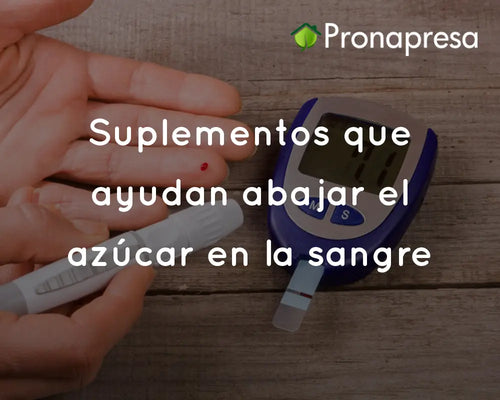
Increased Thirst and Frequent Urination
Polyuria and polydipsia are medical terms for frequent urination and excessive thirst, respectively. These are two of the first symptoms that often appear in people who develop diabetes. The reason behind this increased need to drink water and urinate is the buildup of glucose in the bloodstream.
When sugar levels are too high, the body tries to eliminate the excess through urine. As a result, people with diabetes may experience:
- Need to urinate several times during the night.
- Dry mouth and thirst sensation that is not easily relieved.
These symptoms can be bothersome, especially if they interfere with restful sleep.
Extreme or Constant Hunger
Intense and constant hunger , known as polyphagia, is another early symptom of diabetes. This occurs when the body doesn't properly use insulin, the hormone responsible for allowing glucose to enter cells to be used as energy.
Because cells don't receive enough glucose, the body sends hunger signals in an attempt to obtain the energy it needs. However, even if you eat more, a lack of insulin or its malfunction prevents this energy from reaching the cells.
Fatigue and Extreme Tiredness
Feeling constantly tired or weak is another early symptom of diabetes that shouldn't be ignored. Fatigue occurs for several reasons:
- High blood glucose levels : When glucose levels are uncontrolled, the body does not receive the energy it needs.
- Dehydration : Due to frequent urination, the body loses large amounts of water and essential electrolytes, which contributes to fatigue.
Many people tend to ignore this fatigue, attributing it to other factors such as stress or work. However, if you experience unusual tiredness without any apparent cause, it's important to get checked out.
Unexplained Weight Loss
Rapid, unexplained weight loss can be a sign of diabetes, especially in the case of type 1 diabetes. This happens because the body begins to burn fat and muscle for energy when it can't use glucose properly.
In people with type 2 diabetes, weight can fluctuate due to imbalances in insulin levels. This unexplained weight loss is often accompanied by muscle weakness and a feeling of malaise.
Blurred Vision and Eye Problems
Blurry vision is another common symptom of diabetes. When blood sugar levels are too high, they can cause swelling in the lens of the eye, affecting the ability to focus. This can worsen over time if left untreated, and in severe cases, lead to more serious eye problems such as diabetic retinopathy, glaucoma, and cataracts.
Vision changes aren't always permanent in the early stages, and some may improve with blood sugar control. However, it's essential to pay attention to any changes in vision and see an ophthalmologist for an examination.
Frequent Infections
People with diabetes are at increased risk of infections due to a reduced immune system effectiveness. This can lead to:
- Skin infections : such as folliculitis, cellulitis, and boils.
- Urinary tract infections : The presence of high levels of glucose in the urine creates an ideal environment for the growth of bacteria.
If you notice that you are experiencing infections frequently and that they take longer to heal, it is a good idea to consult a healthcare professional to rule out possible diabetes.
Wounds That Take Time to Heal
High glucose levels affect blood flow and the body's ability to heal wounds. This can be seen in small wounds or cuts that take a long time to heal. It's also common to see redness and swelling around the affected areas, which increases the risk of infection.
If you have wounds that don't heal or notice that even the smallest scrapes become infected easily, this could be a sign of diabetes.
Tingling and Numbness in Hands and Feet
Tingling, numbness, and pain in the hands and feet can be signs of diabetic neuropathy, a condition in which nerves are damaged by high blood glucose levels.
This symptom may be mild at first, but if left untreated, it can cause irreversible nerve damage. Furthermore, numbness increases the risk of foot injuries, as the lack of sensation prevents the person from noticing cuts or blisters, which could lead to serious infections.
Darkening of the Skin in Areas of the Body
Acanthosis nigricans is a condition that occurs in people with insulin resistance, causing darkening of the skin in areas such as the neck, armpits, groin, and elbows. The skin in these areas may become thickened and velvety in texture.
If you notice changes in skin color, especially in the body folds, this may be an early sign of type 2 diabetes and insulin resistance.
Mood Swings and Irritability
Diabetes affects brain chemistry and energy levels, which can influence mood. Blood sugar imbalances can cause:
- Irritability.
- Sudden mood swings.
- Feeling anxious or depressed.
It's important to pay attention to these mood swings, especially if they're accompanied by other symptoms of diabetes.
Increased Gum and Mouth Infections
People with diabetes are more likely to develop oral problems, such as gum infections, gingivitis, and cavities. High blood glucose levels create an environment conducive to the growth of bacteria in the mouth, which affects dental health.
How to confirm a diagnosis of diabetes?
If you experience any of the symptoms mentioned above, it's recommended that you see a doctor for diagnostic testing. The most common methods include:
- Fasting glucose test : Measures blood sugar levels after fasting for at least 8 hours.
- Glucose tolerance test : Measures how your body responds to a specific amount of glucose.
- Hemoglobin A1c : Measures average blood sugar levels over the past 2-3 months.
Tips to prevent diabetes
In addition to being alert to early symptoms, you can implement healthy habits that help reduce your risk of developing diabetes. Here are some practical tips:
- Maintain a balanced diet : avoid excessive consumption of sugars and refined carbohydrates, prioritizing fresh and natural foods.
- Exercise regularly : Physical activity improves insulin sensitivity and helps control weight.
- Control your weight : Being overweight or obese increases your risk of type 2 diabetes.
- Avoid smoking and excessive alcohol consumption : both are associated with increased blood sugar and insulin resistance.
Detecting the early symptoms of diabetes early is essential for proper treatment and preventing complications. Don't ignore signs such as increased thirst, frequent urination, blurred vision, or constant fatigue, as these could be indicators of an underlying problem. Remember that taking care of your health today can make a big difference in your quality of life in the future.
If you have any doubts or suspect that you may have diabetes, don't hesitate to consult a healthcare professional. Early detection and management of this disease are key to living a full and healthy life.























































